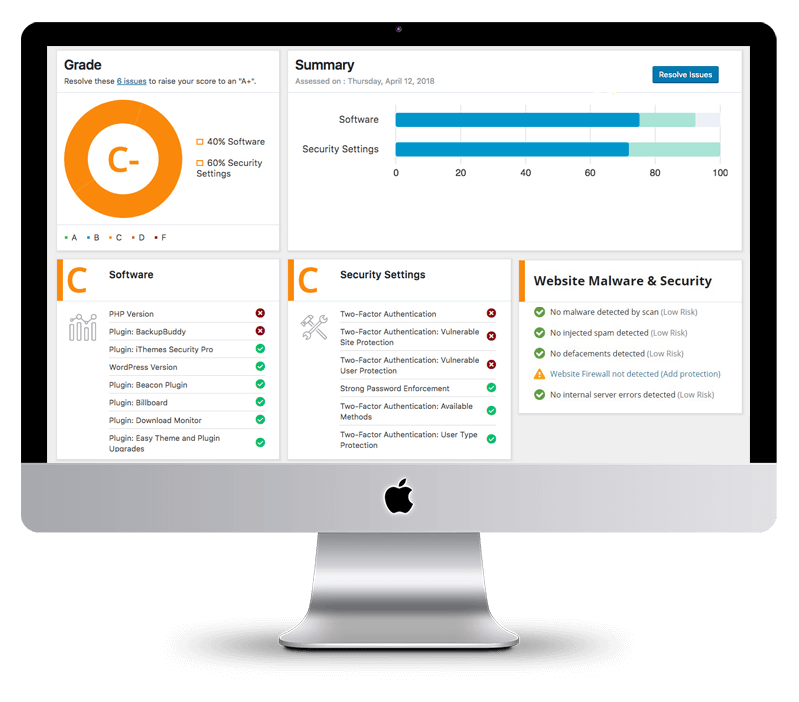Ah, the great SEO conundrum: how to add SEO keywords in WordPress without turning your website into a keyword-stuffed monstrosity. If you’re a business owner in the USA, you know that good SEO is the secret sauce that can propel your business to new heights.
But like any secret sauce, it’s a delicate balance of ingredients. In this guide, we’ll dive into the art and science of adding keywords to your WordPress website. But first, let me quickly share how search engines have evolved over the years.

In the early days of the internet, search engines couldn’t quite understand the subtleties of language and relied heavily on keywords to make sense of what a given page was about. But now, search engines have a better grasp of language, meaning they don’t heavily rely on keyword usage anymore.
So, our mission is to create keyword-rich, relevant content that pleases both humans and search engines. Are you with me? Good, let’s go!
Step 1: Do Your Keyword Research
Before we dive into the nitty-gritty of adding keywords to your WordPress site, you need to know what keywords to use. That’s where free tools like Google AdWords Keyword Planner come in. Use these free tools to find relevant keywords for your target audience. Remember, each page should target one search intent or answer the same question in different words. You might end up with 5 or 10 keywords that essentially mean the same thing.
“Keywords are like a compass for your SEO campaigns; they tell you where to go and whether or not you’re making progress.” – Cyrus Shepard, Founder of Zyppy
Step 2: Incorporate Keywords into Your Content
Now that you have your keywords, it’s time to sprinkle them throughout your content. Keep the following tips in mind:
-
- Incorporate the main keyword into the H1 title, Meta Title, and Meta Description.
- Use related terms and questions in the subheadings.
- Avoid keyword stuffing – write for humans first, search engines second.
- Use the Yoast SEO plugin to optimize your WordPress site.
Personal Anecdote: When I first started in SEO, I made the mistake of going overboard with keyword usage. My pages were a mess! Over time, I learned that less is more when it comes to keyword usage.
Step 3: Optimize Your WordPress Site with the Yoast SEO Plugin
The Yoast SEO plugin is your new best friend. It’s a powerful tool that makes adding keywords to your WordPress site a breeze.
- Install the Yoast SEO plugin from the WordPress dashboard.
- Go to the “SEO” tab on the left-hand side of your dashboard.
- Under the “SEO” tab, you’ll find the “Focus Keyphrase” section. Add your focus keyword here.
- Edit your post titles, meta descriptions, and header tags in the “Snippet Editor.”
“Good SEO work only gets better over time. It’s only search engine tricks that need to keep changing when the ranking algorithms change.” – Jill Whalen, SEO Consultant
Step 4: Don’t Forget the Extras
After optimizing your content, don’t forget the extras that can help boost your SEO efforts.
- Add alt text to your images with relevant keywords.
- Use header tags (H2, H3, etc.) for your subheadings, incorporating related keywords.
- Optimize your WordPress theme for SEO – choose a theme that’s built with SEO in mind.
- Use internal and external links strategically, with appropriate anchor text.
- Make sure your site’s URL structure is clean and easy to understand.
“SEO is a marketing function for sure, but it needs to be baked into product, not slapped on like icing after the cake is baked.” — Duane Forrester, VP of Industry Insights at Yext
Step 5: Monitor Your Progress and Adjust as Needed
Adding keywords to your WordPress site is just the beginning. It’s crucial to monitor your progress and make adjustments as needed. Here’s how:
- Regularly check your search engine rankings and organize traffic.
- Analyze your keyword density and placement. Make sure you’re not overdoing it or underutilizing your keywords.
- Monitor your competitors and adapt your strategy if needed.
- Keep yourself up-to-date with current SEO practices and algorithm updates.
“The success of a page should not be measured by one criterion: Does the visitor do what you want them to do? — Aaron Wall, Founder of SEOBook
Now, let’s wrap it up with a FAQ section to address some common questions about adding SEO keywords in WordPress.
Frequently Asked Questions (FAQ)
Q: How many times should I use my focus keyword in my content?
A: There’s no magic number, but a good rule of thumb is to aim for a keyword density of 1-2%. Make sure your content reads naturally and avoid keyword stuffing.
Q: Can I add multiple focus keywords to one post?
A: Yes, you can target multiple keywords in a single post. However, it’s better to focus on one primary keyword and use related terms and questions in the subheadings.
Q: Do I need to include my focus keyword in my URL?
A: Including your focus keyword in the URL can help with SEO, but it’s not a requirement. The most important thing is to have a clean and readable URL structure.
Q: Should I use the same keywords for my meta description and alt text?
A: It’s a good idea to use relevant keywords in both your meta description and alt text. However, don’t force it if it doesn’t fit naturally.
Q: Is there a specific hosting plan I need to enhance my SEO impact?
A: There are several different hosting plans available, but you can find the best WordPress hosting for SEO right here on our very own website. We offer what you need at a fraction of the cost. Explore our plans here and choose the best for your needs and budget.
In Conclusion
The key to adding SEO keywords in WordPress is to strike a balance between pleasing the search engines and providing value to your human readers. Keep your keyword usage natural, use the Yoast SEO plugin to optimize your content, and don’t forget about the extras like alt text and header tags. With a little patience and persistence, your SEO efforts will pay off through higher search engine rankings, increased organizer traffic, and, ultimately, more business for you. Happy optimizing!


